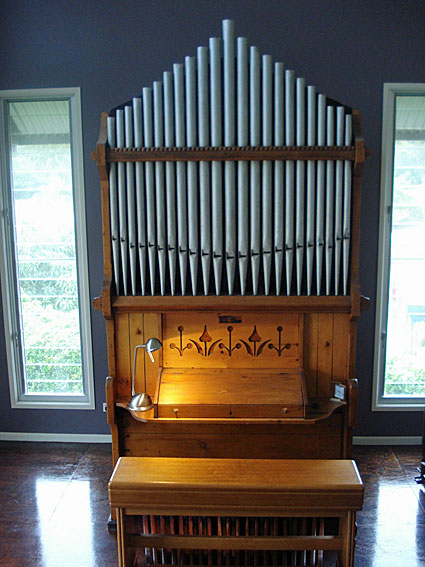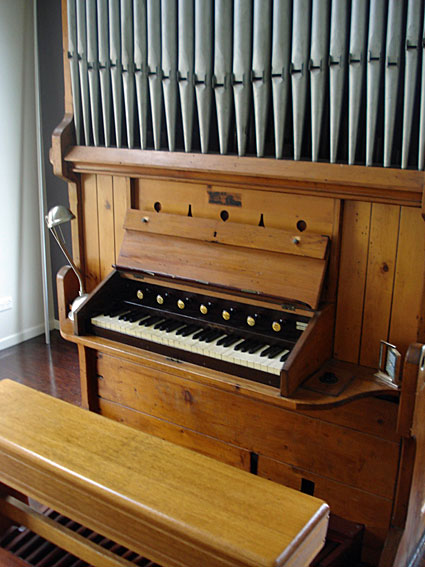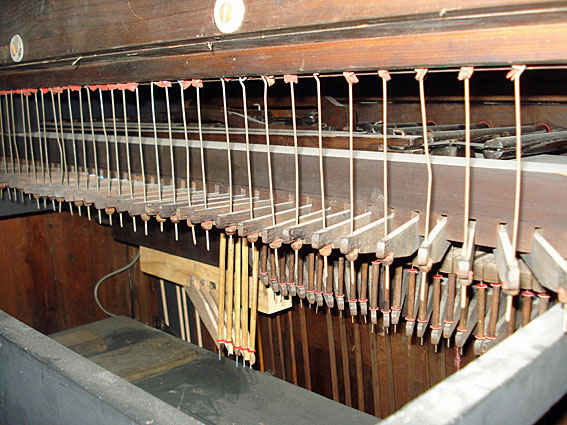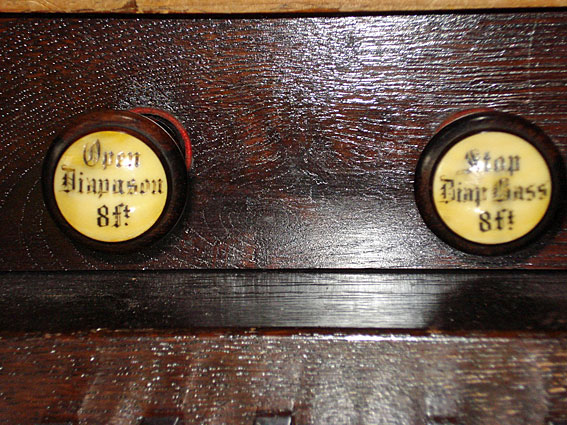
The Alfred Monk organ,
formerly at Holy Cross Anglican Church, Hove, Sussex, UK
[Photograph by Gregory Mayer (June 2013)]

The Alfred Monk organ,
formerly at Holy Cross Anglican Church, Hove, Sussex, UK
[Photograph by Gregory Mayer (June 2013)]
Historical and Technical Documentation by Geoffrey Cox
© OHTA 2013 (last updated June 2013)
This organ was formerly located at Holy Cross Anglican Church, Shelley Road, Hove, Sussex, UK, where it stood at the East end of the North nave.1 The church was built in 1903, and the organ was possibly built for a previous location, most probably a house.2 It is one of just two organs in Australia by Alfred Monk of London, the other having been imported in 1895 for Wesley Uniting Church, York, WA.
The son of Stephen Monk, also an organ builder, Alfred Monk (born September 1847) was an organ builder working in London during the period 1862 to 1926. He was listed in 1871-72 at 14 Bayham Street, Camden Town, London.3

[Photograph by Gregory Mayer (June 2013)]
The organ was purchased by its present owner in 2008 as a practice/teaching instrument. The builder's name plate was damaged by an attached veneer panel glued over the top of the carved original panel. Although the word 'Town' can be discerned, an exact date cannot be established.
Most of the pipework is enclosed and appears to be untouched in terms of voicing.
The original pedalboard was only 25 notes, and was flat and straight. A secondhand pedalboard was purchased from OHTA, along with the Adelaide Town Hall bench by Laurie (1970). New mechanical action for the extra five pedal notes was constructed in 2010 by the owner to match the existing action. The old pedalboard and bench have been retained and could be reinstalled at a later date if desired.4

New mechanical action for the extra five pedal notes
[Photograph by Gregory Mayer (June 2013)]
| MANUAL Open Diapason Stop Diap Bass Claribel Gamba Gemshorn Principal Wald Flute PEDAL pulldowns only |
8 8 8 8 4 4 4 |
[Tenor C] [bottom octave] [Tenor C] [Tenor C] [Middle c] [Tenor C] permanently on |
Mechanical action
Compass: 56/30 (originally 56/25)
Pedalboard: concave and radiating (originally flat and straight)
Hitch-down lever swell.5

Draw-stops of the Alfred Monk organ
[Photograph by Gregory Mayer (June 2013)]
1 British Institute of Organ Studies, National Pipe Organ Register (NPOR), http://www.npor.org.uk - accessed June 2013.
2 Personal communication to G. Cox from Chris Kearl, British Organ Archive.
3 British Institute of Organ Studies, The Freeman - Edmonds Directory of British Organ Builders from earliest times up to 1950, http://www.bios.org.uk/resources/directory.php -accessed June 2013.
4 Personal Communication to G. Cox from Gregory Mayer, June 2013.
5 Specification noted by Gregory Mayer, June 2013.